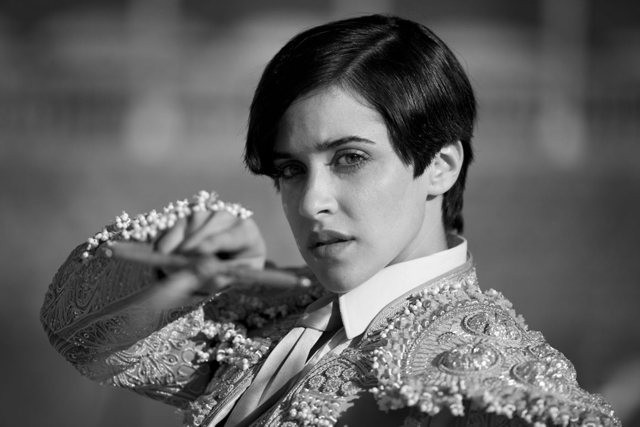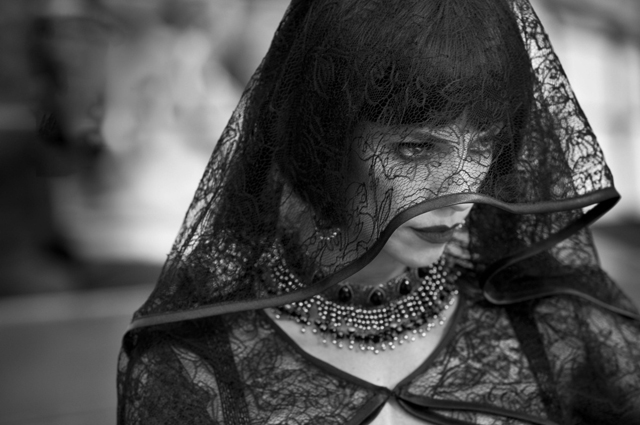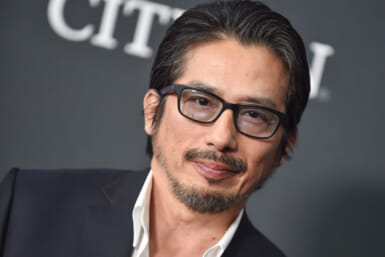The Spanish director speaks about the psychological appeal of fairy tales and the culture of bullfighting.
By Christopher O’Keeffe
Spanish director Pablo Berger starting making Blancanieves around 8 years ago, as a tribute to his love of silent cinema and a retelling of the timeless fairy tale Snow White, in an Andalusian setting. For the director to have gotten funding to make such an ambitious and seemingly unmarketable concept is quite an achievement, one which paid off as the film has swept to critical acclaim globally. Of course, since the release of The Artist and the Academy Awards that followed, the concept of a modern silent movie is not so unthinkable, but this does nothing to diminish the beauty and elegance of Berger’s work. The film tells the story of a bullfighter, paralyzed during a performance on the day his wife dies during childbirth. When the father is seduced by his nurse, the delightfully villainous Maribel Verdú, the child is raised by her kindly grandmother. Forced to return to the clutches of her cruel stepmother when the old woman passes away, the girl grows into a beautiful young woman and attempts to find a home and happiness with a group of traveling, bullfighting dwarves. Fabulous costumes, impressive sets and some great performances combine to make one of the most visually sumptuous films of the year.
When the Weekender was given the chance to sit down with the director we asked about the difficulties and decisions involved in putting a silent film together for the modern audience.
What came first, the idea to make a silent film or the idea to adapt a fairy tale?
The first idea was to make a silent film. I’ve loved silent cinema for a long time, it was maybe thirty years ago at the San Sebastian Film Festival that I saw the movie Greed by Erich von Stroheim and it had a big impact on me. I was entranced; it was such a powerful experience that when I got out I said, “One day I want to make a silent film” and that feeling stayed with me for many, many years. Every time there was a chance to see a film with a live orchestra in Spain I would go: I’ve seen Metropolis, Cabinet of Dr. Caligari . . . so many films that one day I wanted to make a silent film that gets screened with a live orchestra. It was later on in the early 90s that I saw a photograph of bullfighting dwarves and I thought “What if I put in Snow White as a bullfighter?” In a way Roger Corman did this first in the 60s and 70s where he began with a poster; in a way I had a poster with Snow White and bullfighting dwarves and then I combined it with the idea of making a silent film. When I put this theme together it became the movie Blancanieves.
What did you interpret as the main themes of the fairy tale, and what did you want to express in the film?
“To achieve emotion the audience has to feel empathy and connection to the characters and you can only achieve that when the performers are true.”
Well the great things about fairy tales is that they have passed the test of time. They talk about basic emotions and cinema is all about the basic emotions—love, fear, anger, envy, death, loss; all of these elements handled in such a raw way with big strokes almost like an opera. I think fairy tales are bigger than life; it’s not about completely realistic situations but they talk straight to people. That helped me a lot and also with fairy tales there is no alpha version. Snow White was not written by the Brothers Grimm; all their tales were oral traditions—nobody knows who wrote them. In a way that gave me a lot of freedom; it’s not like adapting a novel. Every father or filmmaker that makes a Snow White adaptation, we are inspired because Snow White is just three pages when you go to the Grimms’ tale. A movie is 90 pages, so I could create new characters and new situations, so it was a very liberating experience to create this work.
So you had no problems with altering the ending?
Of course, in a way I felt like I was a jazz musician, they use standards and whenever they want they start improvising and then you go back to the melody. So in my Blancanieves I kept the melody: I had Snow White, the dwarfs, the stepmother and a prince, but apart from that everything was new. In a way the challenge here was how to tell an old story in a new way, and even if the audience knows the story how can I surprise them as the movie advances? So the end yes it’s different but at the same time it’s the same; it depends on the audience and how they interpret it.
“What if I put in Snow White as a bullfighter?”
Bullfighting is a controversial subject now and it’s viewed pretty negatively outside of Spain, but in this film it’s the heroes, the good guys, who are the bullfighters. What are your views on bullfighting?
Yes, it’s controversial but in Spain you have millions of aficionados; a lot of people are big fans of bullfighters. The fighters are like soccer players, heroes just like sumo wrestlers here in Japan: a lot of people follow it. On the other hand there are a lot of people who are against bullfighting so definitely it’s very controversial. In Barcelona recently they have banned bullfighting; it’s the only place you can’t see it. But I’m from a generation where this was shown on TV all the time I grew up with bullfighting without a complex, maybe the younger generation has more issues with it but not the generation I grew up with in the 70s . . . I’m not a big fan; I respect bullfighting and I respect the choreography and I like this ballet that the bull and the bullfighter do but it’s not like I was a kid and my father took me to bullfighting rings and I wanted to make a bullfighting movie. Bullfighting and the flamenco is just the context, the color.
In silent films like theatre, actors have to exaggerate their actions and expressions to convey meaning, is this difficult for the actors to do? Did any of the actors have a theatrical background that helped them?
I would say that a lot of the famous actors that appear in the film, the first meeting they had with me they were very scared. That was the big question: “How are we going to do this, are we supposed to over act? Are we supposed to move our eyebrows? Are we supposed to put our hands to our forehead?” I said “no, no we are making a modern silent film. The performances need to be realistic, honest, dramatic, three dimensional.” I divided the acting: the darker, more evil characters are more stylized in their acting (I wouldn’t say overacting) but they could be more expressive. On the other hand, the luminous characters like Snow White, the Grandmother, and the father play it straight because I really wanted to touch people. The most important thing is not that it is a black and white silent film: for me Blancanieves should be an emotional experience where the emotion is the key element. To achieve emotion the audience has to feel empathy and connection to the characters and you can only achieve that when the performers are true.
Did this film go into production before The Artist was released?
Well, when The Artist was released we had already shot the movie, it was in the can and we were in the process of editing it. Certainly it was a big surprise when The Artist came out because I had been working on this film for 8 years. Blancanieves is my second film and it was cooking very slowly. Everyone thought I was crazy to make a black and white, silent, and very expensive film. You can make a black and white silent low budget film or experimental film but when you want to make a silent film for a wide audience that’s when you really need a big budget. That was the element all the producers where very scared of. In a way with The Artist we are brothers, we are very connected, and hopefully more silent films can come along. The Artist was successful. Blancanieves has been successful, so why not? There’s an audience that want to see silent films but I insist that the silent part is just incidental; what’s important is that the audience connects with the story. When the audience starts watching a movie after five minutes they forget that they are watching a silent film, it’s not even important if it’s sound or silent, what’s important is that they connect and are engaged by the story.
What were some of the challenges in shooting a silent film?
The biggest challenge was finance, to finance a silent film was almost an impossible task but to shoot theres a lot of advantages. First in directing the actors you can talk to them! I can say “faster, slower, look over there, look to the right, get out of the frame!” So it’s very interactive which is something that you don’t usually do.
Did you find yourself doing that a lot then?
Once in a while, I tried to control myself. I would talk with the actors first, do they mind? Some of them would tell me “Please, Pablo talk to me” and it was very helpful to work with a child this way. Sofia’s not an actor (Sofía Oria, who played the young Snow White), it was her first film so it helped a lot to get the performance. Also, the fact that the camera was the protagonist, in a silent film we were able to do all these crazy camera angles and it was a lot of fun. We shot very quickly, if you shoot movies normally the sets move very slowly, on our set we were just constantly moving and shooting and changing so it was a lot of fun to shoot this film. I could shoot all my movies silent.
Blancanieves was released in Japanese cinemas on December 7.
Main Image: Inma Cuesta










